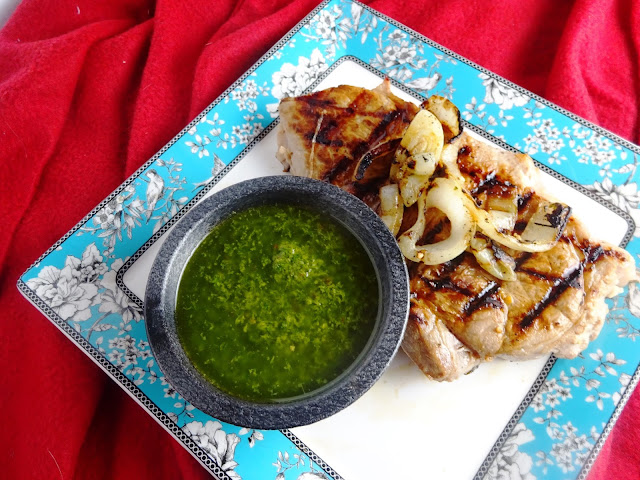Mussels 101
Mussels. Let me tell you a little bit about mussels. See, when you grow up in Maryland, and spend your summers down Ocean City, mussels are inevitable. Of course, we're talking rough and tumble, steamed in water, served with a wedge of lemon and a ramekin of melted butter, no frills mussels. And they are delicious! For the uninitiated, I think of mussels as the textural middle ground between clams (more chewy) and oysters (more viscous). Mussels are perfect: cheap, easy to make, poppable, fun to share, and can look absolutely beautiful!
What follows is a bit of a primer on making mussels. This is clearly a food that should be demystified, so that everyone can eat mussels all of the time. Once you know a few things, like how to sort out the bad from the good, and how to ensure the mussels are clean and without grit, this becomes a fast meal that you can adapt to any flavor profile you want.
So of course, following the Tao of Julia, I made mussels in the French fashion - steamed in a white wine broth and then served with a crusty bread to sop up the ample broth. The beauty of mussels, as you can see in way too many Belgian places about DC these days, is that you can basically make any broth you'd like to go with it. Those with access to a deep fryer (and if you're reading this blog regularly, I assume you've followed my advice and made your purchase) should serve their mussels with a side of frites.
The recipe that follows is easy, and a good jumping off point. Try adding some crispy bacon, or heavy cream. Try with coconut milk and thai basil. Try with chicken broth and sage. Honestly, mussels steamed in just about any broth will end up exquisite!
The real trick here, which I will add to the preparation steps, is how to get the grit out of the mussels. As a kid, mussels ranked as lesser than clams simply because eating mussels was a bit like grit roulette. Personally, I can think of few things less appetizing than biting into a succulent, juicy mussel only to have your teeth bite down on particles of sand. Thankfully, the secret to grit-free mussels is incredibly simple (and you will thus become unforgiving of restaurant mussels that contain any grit at all). Thank you, Julia, for teaching me all your mussels secrets!
Oh, yeah! The secret! So, after you go through your mussels to dispose of the duds (described below at length), then scrub some of the grime from the keepers, all you need to do is put the mussels in a bowl, cover them with water, and then add a quarter cup of flour to the top. The theory is that the mussels, resting in the water for an hour, will open up slightly to eat the flour from the water, thus releasing their grit to the bottom. Are the mussels actually playing Hungry Hungry Mollusks in their bath? Who cares? An hour later, you are ready to steam up some grit-free mussels.
When buying your mussels for an entree, estimate one 1lb bag of mussels per person. Typical to buying any seafood, go to a nice vendor, be it a dedicated fish market (Maine Ave. Fish Market, for instance) or a quality super market. Smell the mussels - they should smell like the ocean, and not at all fishy. They should be packed in a netted bag and partially buried in ice to keep them fresh. Ask your fishmonger when the mussels arrived, and get the freshest available. You will still have some dead mussels in the bag - estimate on about a 10% loss ratio - but the fresher they are, the better they will taste. If you are bringing them home to cook later, cover them in ice and let them rest in the fridge until you are ready to cook them.
Ingredients:
- 2 lb of mussels (assuming a romantic dinner for two or a platonic dinner for one lonely bachelor)
- 4 Tbs butter (or ... you know ... more)
- 1/2 cup of chopped shallot or onion
- 6 sprigs of parsley
- 1 Tbs thyme (freshly picked from your fire escape herb garden)
- 1 bay leaf
- 1/2 bottle of white wine (the other half can be stored in your belly)
To Prepare:
- Sort the mussels. Follow the picture below to see the difference: if the mussel is even partially opened, dispose of it. The healthy, still alive mussels will be tightly closed. If you are unsure, er on the side of caution and chuck the mystery in the bin. Like all shellfish, you should cook your mussels while they're still alive. Consuming mussels that were dead prior to cooking will taste horrible (at best) or even get you sick (at worst). This rule applies to all shelfish!
On the left is a bad, dead, opened mussel. On the right is a healthy, living, tightly closed mussel. - Clean the mussels. This step is easy, as most mussels you will purchase have been cleaned to some degree. At the very least, rinse the mussels to get rid of any grime, as you will be cooking them directly in the broth and anything on the shells is therefore going in the broth (and your belly). If the mussels have beards or other solids on their surfaces, scrub lightly under water to remove, then rinse. Place your cleaned mussels in a large bowl and cover them with clean water.
- De-grit the mussels. As noted above, once the mussels are in their bowl of water, add a quarter cup of flour to the top, letting it sink in, and then stirring to incorporate it slightly. At this point, set a timer for 60 minutes, pour a glass of white wine, and walk away. The magic will happen on its own here.
- Cook the mussels. Don't go saying I never gave you an easy recipe! After 60 minutes, drain the mussels in a colander. Add all of your ingredients besides the mussels to a large pot, then bring to a boil. Add the mussels and cover. After about 3 minutes, hold on to the lid and, wearing oven mitts to protect your digits, shake the pot a bit to mix the mussels around. At this point, I take the lid off and start removing the finished mussels. You can tell a mussel is cooked perfectly when it opens up widely. Remove the open mussels into your serving bowls, continuing to boil the broth and cook the remaining mussels. Continue this process until all of the mussels have opened up and been placed in bowls. Note: some of the little buggers may take slightly longer than others, so don't get frustrated if one doesn't open for ten minutes. After ten minutes, pull any still-closed mussels and toss them in the bin with the other jerks. Boil the broth down for another 5 minutes, reducing it and concentrating your flavors. Ladle the remaining broth into the serving bowls, over the mussels.
- Serve the mussels. If going French style, a crusty baguette for dipping in the broth. If going Belgian style, serve with frites. Either way, serve with a dry white wine (preferably the one you cooked with if there's any left).
Et voila! Bon appetit!













Comments
Post a Comment